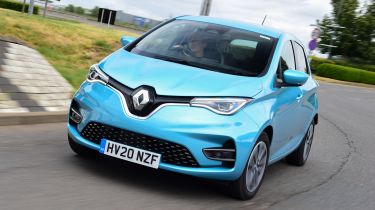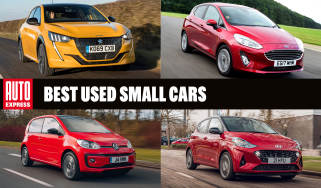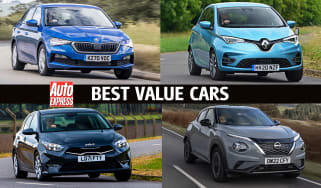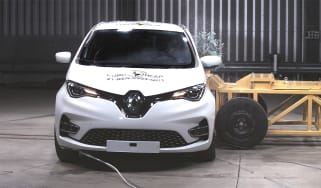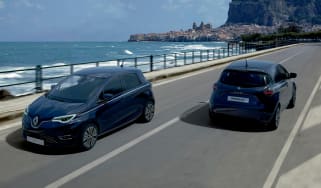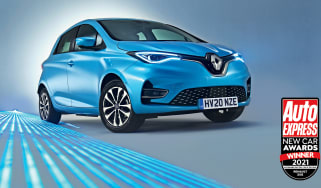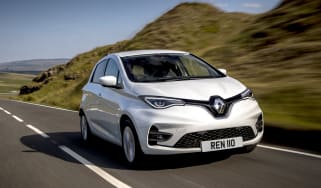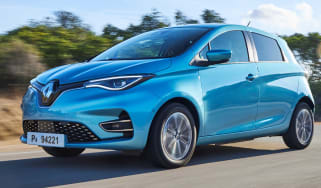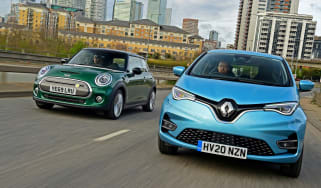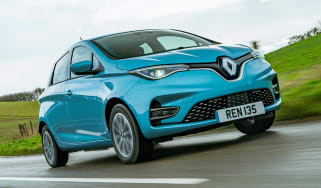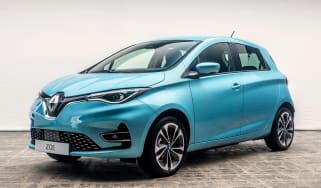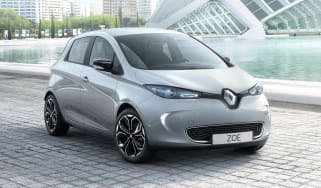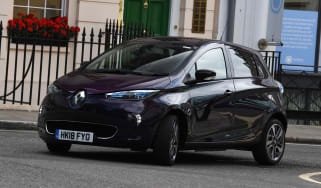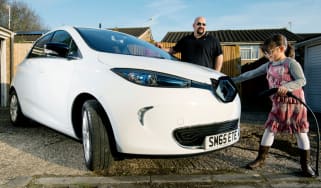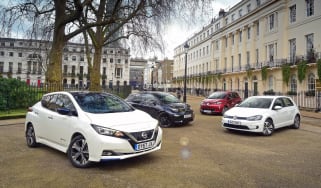Renault Zoe (2013-2024) review
The Renault Zoe is a capable small electric car, let down by its poor build quality and safety rating

This is an archived review of the 2013-2024 Renault Zoe. If you are interested in information about a used Renault Zoe, or news about the latest Renault models, please follow the links provided.
From behind the wheel, the Renault Zoe feels much like a traditional combustion-engined supermini – albeit a much quieter one. It’s ideal for a family looking for a second car, as the Zoe suits shorter commutes and daily errands perfectly. It's still reasonably practical, offers nearly 240 miles of range and will cost you mere pennies to run.
However, after more than a decade on showroom floors and with new fresh faced competition arriving thick and fast, the Renault Zoe is hanging on rather than leading the pack. It’s not as cheap as it once was either, and the zero-star rating from industry safety test body Euro NCAP makes it even harder to recommend.
About the Renault Zoe
The Renault Zoe was one of the world’s first affordable electric cars, having been introduced all the way back in 2012, just two years after the original Nissan Leaf hit the streets. Since then we’ve had two generations of the bubble-shaped supermini, which for quite some time was Renault’s only electric passenger car. That, of course, changed in 2022 when the Renault Megane E-Tech hatchback arrived, with more Renault EVs on the way, including the reborn Renault 5.
The small electric car market has exploded since the Zoe first arrived, so there’s now plenty of competition. The Zoe’s closest rivals are other zero-emissions superminis like the Peugeot e-208, Vauxhall Corsa Electric and Ora Funky Cat, all of which offer similar levels of practicality and range. Though the Zoe trumps the lot with its impressive 338-litre boot and 249-mile range.
Used - available now

2022 Nissan
Qashqai
20,229 milesAutomaticPetrol1.3L
Cash £17,899
2019 Lexus
CT
35,000 milesAutomaticPetrol1.8L
Cash £15,499
2018 Kia
Stonic
36,370 milesManualPetrol1.0L
Cash £10,799
2018 Audi
A6 Avant
102,977 milesAutomaticDiesel3.0L
Cash £12,495Stylish rivals such as the Fiat 500, Honda e and MINI Electric are sure to catch the attention of buyers looking for a smart, sophisticated urban runabout, however these are still city cars first and foremost so boot space is limited, as is driving range. Some of the cheaper electric family hatchbacks will give the Zoe a run for its money too, with the MG4 EV in particular offering more range, sharper looks and more modern tech for less money.
Speaking of money, the Zoe’s starting price has now ballooned to nearly £30,000 after the Government’s plug-in car grant was axed, among other things. The trim structure and powertrains available have also been cut back recently. For instance, the Zoe was previously available with two outputs from its single, front-mounted electric motor: an R110 model with 107bhp or an R135 version with 134bhp, the more powerful version being the only option now.
Buyers get a choice of Techno and Iconic trim, the only major differences being that pricier Iconic models get 50kW rapid charging and 17-inch alloy wheels as standard. The standard kit list on even the entry-level Zoe is pretty strong, with every model featuring LED head and tail-lights, a 10-inch instrument panel and a 9.3-inch central portrait touchscreen running Renault’s EasyLink infotainment system with built-in sat-nav, plus Apple CarPlay and Android Auto connectivity.
The Zoe also benefits from blind-spot monitoring, front and rear parking sensors and a reversing camera. It lacks several crucial airbags, however, which is just part of the reason why it received a zero-star Euro NCAP safety score in 2021.

